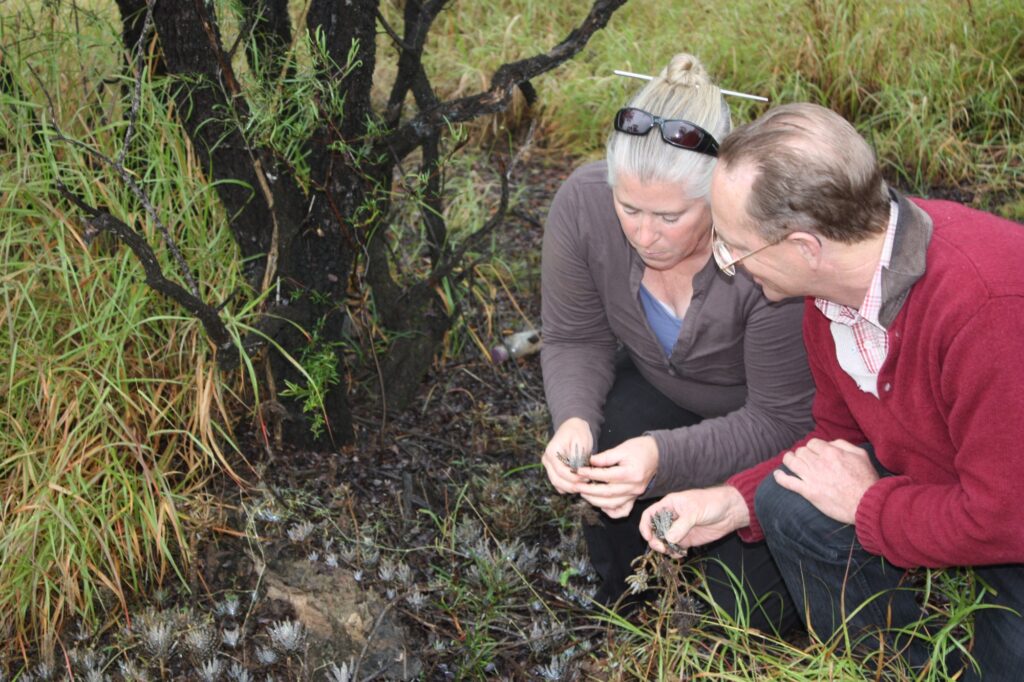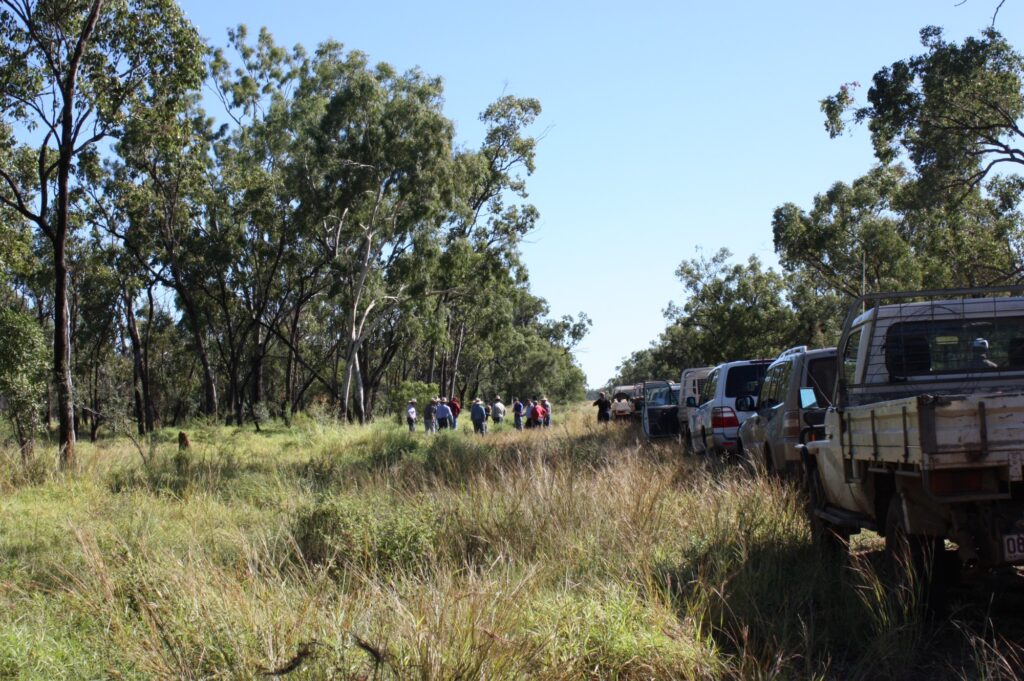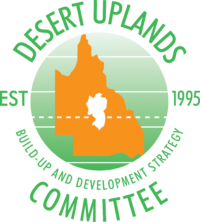With increased vehicular movement through the uptick in mineral, gas and coal exploration, it became clear that WONS (Weeds Of National Significance) could and probably were coming over the Great Dividing Range and spreading through the Desert Uplands Bioregion. Once established and flowering on the western side of the range, these weeds then spread easily down into the pristine Lake Eyre Catchment. So whilst the Desert Uplands Bioregion, thanks to its geographic position, landtypes and healthy ecologies of open woodlands and native grasses and shrubs make it a recognised high quality refugia (for plants and animals) in these changing times, it is similarly important to stop the inland spread of these significant weeds.
An application for on-ground research and weed treatment to RIRDC (Rural Industries Research and Development Corporation, now known as AgriFutures) was successful for two most ingressive WONS – Mother of Millions and Parthenium.

The Desert Uplands Weeds Research Project partnered with Central Queensland University (CQU) and regional landholders (which includes the Councils as their Commons lands – town common, rubbish tip and roadways – with so much traffic are notorious for weed recruitment and spread) to research and trialling Best Practice weed control methodologies and chemicals for Mother of Millions and Parthenium to arrest their spread westward through the Desert Uplands. Once infestations were identified, monitoring sites were established, within which were marked plots for trialling the use of different chemicals, mixes and application methods. Whilst all plots achieved kills, the collated results demonstrated new, more cost-effective means of control for Mother of Millions and Parthenium. Whilst wildfires and winter rain created outlier scenarios, the veracity and depth of the in-field trial research results underwrote the report as published by what had then become AgriFutures. Weed chemicals were reserved for follow-up of trial sites and grazing properties by landholders, with Councils committing to ongoing treatment of identified infestations on commons lands.

With these chemicals now done, The Committee seeks to work to continue to halt the westward spread of these and other WONs, and all weeds that are detrimental to our grazing lands and healthy ecosystems. Mindful of the sensitivity of our riparian zones, and that these drain to the Great Barrier Reef Lagoon, through its braided channels catchment and into Lake Eyre, or centrally to the HCVAEs of Lakes Galilee and Buchanan (and other smaller ephemeral pondages), weedwork in the Desert Uplands has always been and will continue to a high priority. Such valid in-field research abets this effort, as that constantly done by responsible land managers across the bioregion.
